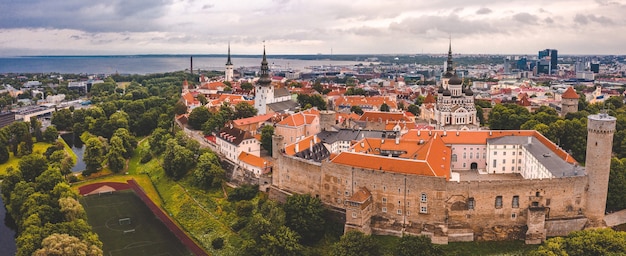
Tallinn has snagged the top spot for the best value destination to visit in 2018, according to Lonely Planet’s Best in Travel. This annual announcement highlights the most exciting places every traveler should consider for their upcoming journeys.
With Estonia’s Independence Day just around the corner on February 24, 2018, marking 100 years of independence, it’s a great time to explore what makes this small country so special. Curious about the top spots to visit in Estonia? Here are 10 must-see locations:
Lahemaa National Park, stretching across 725 square kilometers of wild, pine-filled landscapes, is a favorite among nature lovers. The picturesque Viru Bog, with its 5km wooden walkway, allows visitors to experience this swampy wonderland without getting their feet wet.
Jägala Waterfall, located about 4 km before the Jägala River empties into the Gulf of Finland, is Estonia’s widest waterfall, standing 8 meters high and over 50 meters wide. In winter, it transforms into a stunning ice wall adorned with impressive icicles.
Near the small town of Rummu lies the ruins of an abandoned Soviet-era prison camp, now a popular beach destination. When Estonia regained independence in 1991, the Soviets left, and natural groundwater filled the old quarry, creating a new lake. Some prison remains are now underwater, adding to the site’s allure.
The Panga cliff on the northern shore of Saaremaa is the highest of the Muhu and Saaremaa cliffs, spanning 2.5 kilometers and reaching a height of 21.3 meters. This cliff was once a sacred site where sacrifices were made to the sea god, and today, visitors still leave coins, flowers, and even beer or vodka.
Around 7,500 years ago, the Kaali meteorite impacted Saaremaa, causing massive damage comparable to an atomic bomb explosion. The largest fragment created a 22-meter deep crater with a 110-meter diameter, making it Estonia’s rarest natural wonder and the world’s 8th largest crater.
Saaremaa Island offers enchanting landscapes with breezy meadows, timber windmills, lush spruce forests, and stunning Baltic coastlines. Outdoor enthusiasts can explore the Loode area, Kaali meteorite craters, Bear Lake, Panga cliffs, or the Puhatu hot springs.
Rõuge Valley is a 52-meter deep, 10-kilometer long valley connected by the Ajo or Rõuge River, featuring seven lakes. The most famous part, Nightingale Valley (Ööbikuorg), hosts the Rõuge Nightingale Valley Centre, which provides information about the area’s natural and historical significance.
Completed in the 1980s, Tallinn TV Tower stands as Estonia’s tallest building at 314 meters. Visitors can enjoy a 3D film about the tower, an exhibition on Estonia’s major achievements, a historical overview, an observation deck, and a cozy café at 170 meters. Thrill-seekers can try the “Walking On The Edge” attraction while taking in panoramic views of Tallinn.
Tallinn’s Old Town, established in the 13th century, offers a rich historical experience with its medieval buildings and winding streets. The hilltop is home to significant religious and political landmarks. Visitors can stroll through colorful streets, visit historic churches, or relax in the central square with views of the town hall.
The upside-down house, Tagurpidi Maja, offers a fun and disorienting experience where everything is literally flipped with the upper floor below and vice versa. It’s an amusing attraction for all ages.
Estonia’s summer days are remarkably long, with nearly 24 hours of daylight at times. For an exciting 24-hour adventure, visit Estonia and see what you can pack into a single day, from city tours and biking to exploring the Western coast and enjoying a pub crawl in Tallinn’s Old Town.
Visitors can book tours, attractions, and activities through platforms like GET YOUR GUIDE, offering the best price guarantees. For flight comparisons, MOMONDO helps find the best fares from over 1,000 airlines and travel sites.